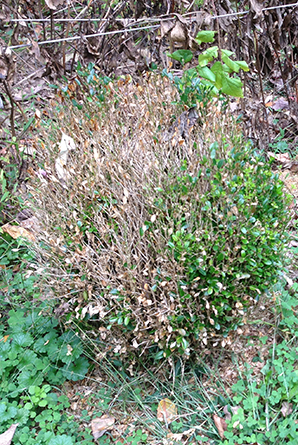

Attributes: Genus: Buxus Family: Buxaceae Life Cycle: Perennial Woody Recommended Propagation Strategy: Stem Cutting Country Or Region Of Origin: Developed in Canada at Sheridan Nurseries Wildlife Value: Flowers attract bees Particularly Resistant To (Insects/Diseases/Other Problems): Deer resistant Dimensions: Height: 2 ft.Tags: #evergreen #small tree #specimen #shrub #accent plant #rabbit resistant #topiary #deer resistant #formal garden #walkway planting #small group plantings #compact habit #problem for cats #problem for dogs #problem for horses #shrub borders #lawn planting #hedge Profile Video: See this plant in the following landscape: Cultivars / Varieties: VIDEO Created by Elizabeth Meyer for " Trees, Shrubs and Conifers" a plant identification course offered in partnership with Longwood Gardens. Nematodes are an issue in the deep south.įor suitable alternatives, see this video created by Charlotte Glen as part of the Plants, Pests, and Pathogens series. Insects affecting boxwood include boxwood leaf miner, boxwood mite, and boxwood psyllid. Root rot can also be an issue in wet locations. Insects, Diseases, and Other Plant Problems: This plant, as well as most boxwood, is susceptible to blights and leaf spot. Site ‘Green Velvet’ in a lawn or along a walkway as an accent, border, hedge, or foundation planting. Thinning plants annually will assist with air circulation. Remove any accumulated snow to protect the branches. Winter winds can cause dehydration and bronzing, although 'Green Velvet' has good resistance to bronzing.
BOXWOOD BLIGHT RESISTANT VARIETIES FULL
Protect from winds and full winter sun by placing in a location where these conditions are limited.

Limit cultivation around these shallow roots, as it can damage the plant. Its shallow roots should be protected with a layer of mulch. Pruning will lead to tender new shoots, which can be damaged by a late frost. 'Green Velvet' is tolerant of pruning however, pruning should be done after the last frost. On the other hand, when growing in full sun, the foliage may scorch, turn brown in winter, and suffer from mite attacks. Plants grown in full shade will have decreased foliage. The rounded shrub or small tree grows best in a mixture of sand and clay soil, receiving both sun and shade.

This hybrid combines the hardiness and compactness of the Korean boxwood with the velvety deep green foliage of the English boxwood. Another etymology is that boxwood describes the square stems of its young plants. The common name of boxwood refers to the wood used to make carved decorative boxes. ‘Green Velvet’ was developed in Canada at Sheridan Nurseries. Originally from Europe and Asia, boxwoods are one of the oldest known garden plants, dating back to 4000 BC. Buxus is the Latin name for boxwood or box tree. 'Green Velvet' boxwood is an evergreen shrub or small tree in the Buxaceae (boxwood) family that can easily be shaped into a formal hedge or topiary. Phonetic Spelling BUK-sus This plant has low severity poison characteristics.


 0 kommentar(er)
0 kommentar(er)
